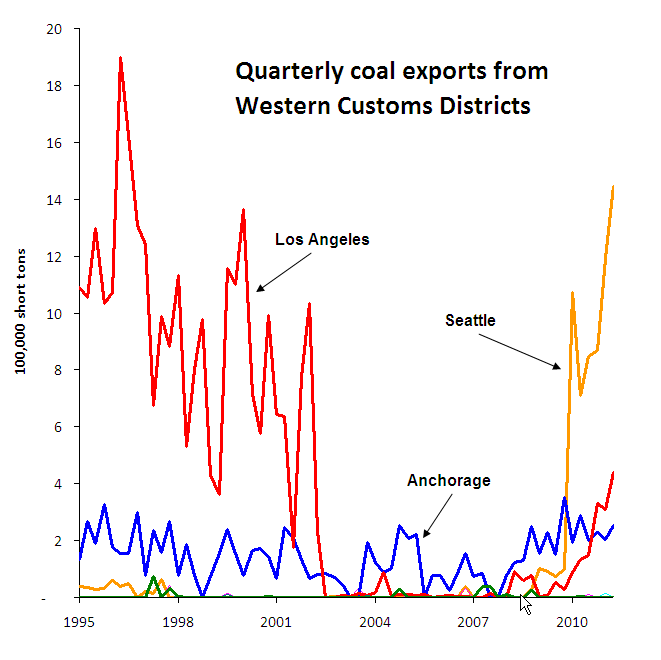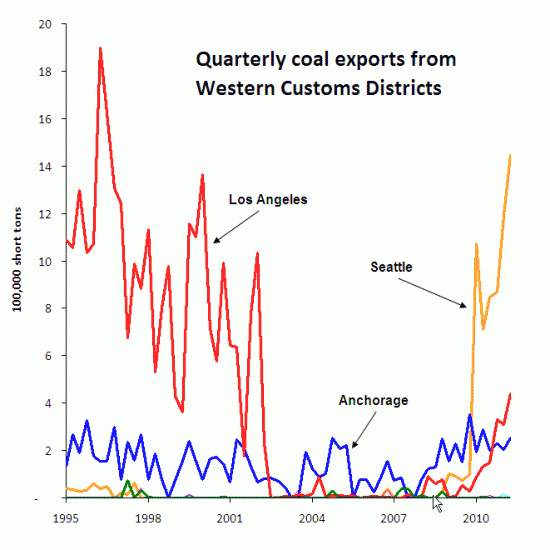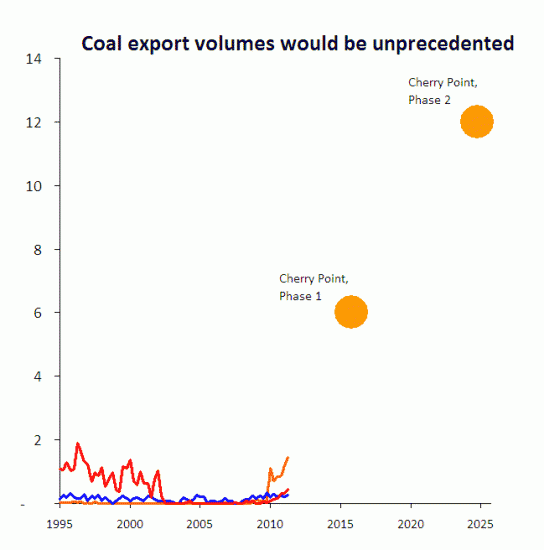I’ve finally had a chance to absorb the US EIA’s latest quarterly coal report, which takes us up through the middle of 2011. As I’ve shown before (here and here) coal exports in the West have had a volatile history. In this chart, you can see the last 15 years of quarterly data, complete with upward spikes in the last few quarters.
Keep in mind that these are Customs Districts, not ports. Seattle itself doesn’t export any coal, but the Seattle Customs District does move some volume via the rail crossing at Blaine, Washington as the coal makes its way from the Powder River Basin to BC’s Westshore Terminal for onward shipment to Asia.
So what’s new in the data? In the second quarter of 2011, about 1.4 million tons of coal were exported from the Seattle District. That was a 21 percent increase from the previous quarter, and a whopping 103 percent from the second quarter of 2010. Yet even at the current pace, 2011 coal exports from the Seattle District will only reach about 5.3 million tons — an order of magnitude smaller than what’s planned for Cherry Point.
For some perspective, here’s the same data plotted against the Cherry Point plans:
Coal companies argue that existing coal trains haven’t caused many problems (although there are plenty of northwest Washington residents who disagree). But it’s a silly argument: serving the Cherry Point terminal would mean multiplying existing coal trains by 10 times. Serving the Longview terminal too would mean multiplying them by 20 times.
The coal shipper’s argument is like saying that if you live on a street, you won’t mind living on a freeway. Coal exports may be up recently, but they’re nothing compared to what could be coming.
Coal exports from Los Angeles were up too, with almost a half million tons moving in the second quarter of 2011.
Interestingly, coal exports out of the Great Falls Customs District show up as a near goose egg. Despite rumors that coal shippers will use the Sweetgrass, Montana rail crossing to move coal north to Ridley Terminals at Prince Rupert, BC, there’s scant evidence of that actually happening. In all of 2010 and the first half of 2011 combined, a scant 14,000 tons of coal was reportedly shipped across the border at Sweetgrass.
It could be that Ridley-bound coal is moving instead via the Blaine crossing in the Seattle District (at least one test-run coal train has reportedly taken that route), or it could be that Ridley is just too far away, making it an uneconomic choice for coal companies.
Many thanks to Pam MacRae for research assistance.




Comments are closed.